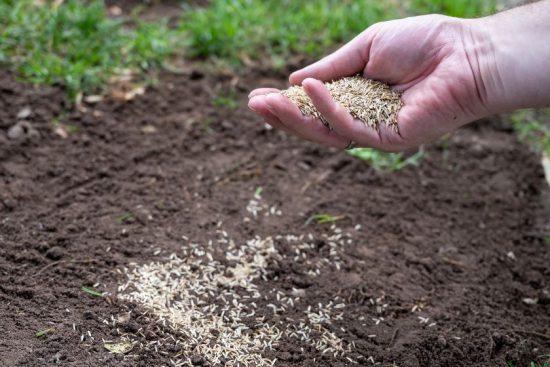Spring Lawn Repairs
As we have reached February, people start to look forward and think about the spring months to come and the different jobs that can be done to help get their turf looking as it once did the summer before. Winter can play a huge part in setting lawns back and making them need a lot of TLC once spring comes around.
Why does winter affect grass?
Winter can be a tough season for grass due to low temperatures and a lack of light especially in shaded areas. Grass may thin out and in some cases die, leading to bare patches in the lawn which would have to be reseeded. This usually happens as a result of a considerable reduction in sunlight over the winter months. On top of this if there are building or trees near the lawn, with the low angle of the sun during winter, previously sunny spots may now be struggling and the turf is in constant shade for months on end.
If the winter is cold, dry and there is still a good amount of light (not covered by constant cloud) then the damage to the turf will be reduced. However, if you have been experiencing a wet and cloudy winter, you will have an increased amount of damage to your turf as a result of the low light conditions and excess water from rainfall. Moss is also a constant threat during the colder months as it thrives in cool, damp conditions. Modern sports grounds now use specialist lighting rigs to cope with shady conditions and weak light – but there is plenty that can be done without huge energy bills or strange looks from the neighbours!
How can I resolve these problems?
There are a few steps that can be followed to help get your lawn back to Its best. Here is what we recommend for early spring repairs:
- Rake or scarify in dry conditions to remove any thatch, moss or other debris from the turf.
- Once the frosts have passed, overseed the entire turfed area so that the new grass seed blends with the grass that is already there –Winter grass seed will germinate in temperatures as low as 5°C (Top Tip: Always ensure that the new seeds make good contact with the soil)
- Apply an appropriate fertiliser – we would suggest using either: G0 10-4-4 for early season nitrogen uptake and fast response, or; G5 a slow release 18-22-5 fertiliser that capitalises on patchy spells of mild spring weather to feed the grass.
- Make sure that the seed and fertiliser are well watered in
What seed is best to use?
If you haven’t experienced this sort of damage before then it is worth just getting a grass seed that suits your normal conditions whether you are wanting a hard wearing grass seed or one that is suitable for a pitch and playing field. Grass seed mixes contain a variety of species, the main two types are ryegrass (quick rooting and quick growing), fescues (slower growing but deeper rooted so copes with stress)
The time to think about a specific seed to put down would be if this issue is a regular occurrence and you have a building or fence blocking the sun light from getting to the growing grass. In this instance we would recommend Amvista Shady Lawn Seed Mix.





